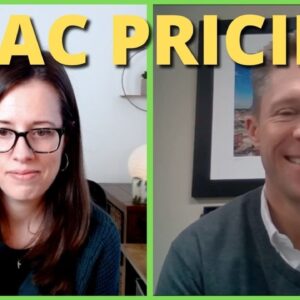The Unprecedented Changes in the HVAC Industry
The heating, ventilation, and air conditioning (HVAC) industry has experienced significant changes in the past couple of years. These changes have affected many aspects of the industry, including the cost of materials, manufacturing, and even efficiency standards. As a result, customers are often shocked to find the price of new equipment significantly higher than expected.
Reasons Behind the Price Increase
There are several factors contributing to the price increases in the HVAC industry. Firstly, the cost of raw materials like copper, aluminum, and steel has increased. In some cases, the prices have more than doubled. This has directly impacted the cost of HVAC equipment.
Additionally, there has been a shortage of materials across various industries caused mainly by the global pandemic and its effects. This shortage has led to skyrocketing prices for essential items like wood and sheetrock, and the HVAC industry has been no exception.
Furthermore, online resources have not yet caught up with the changes in the industry. Information regarding the cost of HVAC systems found online may not be up-to-date, resulting in customers being ill-prepared for the actual cost of new equipment.
New Efficiency Standards and Their Impact on Pricing
One significant change in the industry is the revision of efficiency standards for air-conditioning units. The government aims to provide more accurate efficiency ratings for these appliances by introducing a new standard called Seasonal Energy Efficiency Rating 2 (SEER2).
The introduction of the SEER2 standard has required manufacturers to retool their assembly lines and create new, more efficient air conditioners. This has led to an increase in the cost of manufacturing, which is passed on to the customers.
The price of HVAC equipment has increased, ranging from a 15% to 25% increase, due to the regulatory changes and the introduction of SEER2.
Changes in Refrigerant Regulations
Another change that affects the HVAC industry is the phasing out of the R22 refrigerant (also known as Freon). This refrigerant is being replaced with the more environmentally-friendly R410A. The cost of R22 has increased dramatically as a result of the phase-out, making it more expensive for those with R22 air conditioners to maintain their systems.
What Customers Should Know
As HVAC service providers aim to inform their customers about the changes in the industry, it is essential that homeowners and business owners are aware of the pricing changes.
Customers who are considering replacing their HVAC systems may want to do so sooner rather than later, as prices are only expected to continue rising. HVAC service providers may be working with their existing pricing sheets for a limited time, but as the cost of materials and manufacturing increases, the prices will inevitably be passed on to the customers.
Moreover, the price increase in the HVAC industry is not expected to be a temporary phenomenon. Unlike the fluctuations in wood prices, there is little chance that HVAC equipment prices will significantly decrease in the foreseeable future.
Preparing for the Future of HVAC
The HVAC industry is navigating through unprecedented times with numerous challenges. As a customer, it is crucial to stay informed about the changes in the industry to make well-informed decisions about your heating and cooling systems.
It is advisable to consult with experienced HVAC professionals if you are considering replacing or upgrading your HVAC system. They can provide up-to-date information on pricing, efficiency standards, and available equipment, helping you choose the best solution for your needs.
In conclusion, understanding the reasons behind the pricing changes in the HVAC industry will help customers make informed decisions and better prepare for the future of their heating, cooling, and ventilation systems. It is essential to stay up-to-date with industry changes and rely on professional advice to deal with the impact of these changes on your HVAC installation and maintenance.

